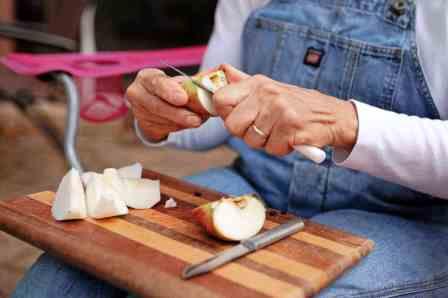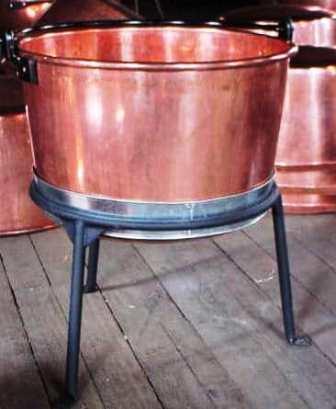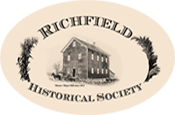Open Fire Apple Butter Making
Good old-fashioned traditions
The skills of past generations were often passed along verbally and through hands-on experience. Children learned the wisdom of their parents and grandparents as they worked alongside them. Sometimes we call the ways of past generations “old fashioned” because they didn’t have the modern conveniences we use today. But often the slower ways tied people closer to each other and the rhythms of the earth. This fall our family had the opportunity to experience this firsthand as my husband’s grandparents taught us a new skill in an old-fashioned way: making apple butter over an open fire.
Apple butter tradition
Years ago, my husband’s grandparents would get together with a group of friends every fall to make apple butter. They peeled the apples by hand—five bushels of them. Then, they gathered together for a full day of cooking, stirring, and canning the delicious results. Several years back, Nanny and Grandpa acquired their own equipment and began teaching their grandchildren the tradition of open-fire apple butter making.
It’s been a few years since anyone organized the event and we all missed it. So, this fall we decided to make it happen. We wanted our children to enjoy this experience, spend time with their great-grandparents, and make these memories together. With practical wisdom, special traditions, and a lot of laughter, they taught us their way of making apple butter.
Old-fashioned apple butter
.jpg) Making apple butter over an open fire is a slow process. Even if you precook your apples to soften them, it still takes lots of hours of stirring and cooking. Peeling bushels and bushels of apples takes a lot of time, too! We spent most of a Friday and Saturday on our apple butter project. But, an important part of the experience is the gift of spending time with friends and family, working and visiting together. We had four generations involved with our apple butter making this year.
Making apple butter over an open fire is a slow process. Even if you precook your apples to soften them, it still takes lots of hours of stirring and cooking. Peeling bushels and bushels of apples takes a lot of time, too! We spent most of a Friday and Saturday on our apple butter project. But, an important part of the experience is the gift of spending time with friends and family, working and visiting together. We had four generations involved with our apple butter making this year.
In my mind, this is the heritage of doing things “the old-fashioned way.” It’s slowing down and spending time with your people, learning from each other, and helping each other. Plus, there really is something about the taste of food cooked long and slow over an open fire. No other apple butter tastes quite the same.
Kids helping make apple butter
.jpg) Even though making apple butter involves a lot of sharp knives, hot fire, and boiling liquids, our children found plenty of ways to be involved. Even the little ones used apple peelers (with careful supervision) and helped us with the peeling process. Our bigger kids helped stir the apple butter. All of them helped add the cinnamon candies and cinnamon oil into the apple butter as it cooked. Our son is always ready to build and feed a fire, and our oldest daughter also joined the canning assembly line. We found ways to get them all involved.
Even though making apple butter involves a lot of sharp knives, hot fire, and boiling liquids, our children found plenty of ways to be involved. Even the little ones used apple peelers (with careful supervision) and helped us with the peeling process. Our bigger kids helped stir the apple butter. All of them helped add the cinnamon candies and cinnamon oil into the apple butter as it cooked. Our son is always ready to build and feed a fire, and our oldest daughter also joined the canning assembly line. We found ways to get them all involved.
All four of our kids were all outside with us all day, playing and helping and eating. One of their cousins was able to join us, and they also played in the woods and played board games near the fire. They especially loved getting to spend time with their great-grandparents, since Covid has limited our family activities this year. The time together was a gift, and I think the pandemic has reminded us of just how precious that gift is.
Peeling the apples
The process of making apple butter begins with peeling the apples the day before. We bought several bushels of “seconds” apples from an  local Amish orchard. Nanny taught me to get several different varieties of apples to give our apple butter the best flavor. Several family members came over and helped us peel apples all afternoon. I found my children out peeling apples while I made supper, and they filled a half a bucket of apples by themselves. Then my sister-in-law and I picked up our paring knives again that evening and peeled until late into the night.
local Amish orchard. Nanny taught me to get several different varieties of apples to give our apple butter the best flavor. Several family members came over and helped us peel apples all afternoon. I found my children out peeling apples while I made supper, and they filled a half a bucket of apples by themselves. Then my sister-in-law and I picked up our paring knives again that evening and peeled until late into the night.
The apples can sit in covered pans or buckets in a cool place overnight. Nanny assured me that it wouldn’t harm the apple butter if they browned a little. A few of us took some apples home to pre-cook before putting the apples in the big copper kettle. This cuts down significantly on cooking and stirring time over the open fire. We worked off an old photocopied recipe with Nanny’s handwritten notes and instructions on it. She thinks perhaps this recipe is for a 30-gallon kettle, and we only had a 20 gallon one. We modified the ingredients based on the amount of apples we could fit into the kettle.
Weather challenges
Although the weather was beautiful and warm the day we peeled our apples, a stormy cold front blew in overnight. Saturday morning dawned gray, raw, and blustery. We tried to set up our cooking fire in our backyard and found that the wind made our project impossible. We had the apples all peeled–people invited–cinnamon rolls ready to eat. Somehow we had to save our apple butter making day.
My husband and I walked across the road and down the farm lane to a small clearing at the edge of my dad’s pine woods. It was a little farther from our house, but the trees gave us just enough protection to start a fire and spend the day in relative shelter from the wind. We were still chilly, but it was bearable. We built a second fire to heat water over for hot chocolate and cooked soup over it for lunch.
Apple butter equipment
 A copper kettle is essential for open fire apple butter making because it conducts heat so evenly and helps keep the apple butter from scorching. You can buy a copper kettle new, if you have several hundred dollars for it. They’re a pretty major investment. If you’re really interested in making apple butter this way, I’d recommend watching farm auctions or antique stores. Or go in together with some friends and begin your own apple butter tradition together!
A copper kettle is essential for open fire apple butter making because it conducts heat so evenly and helps keep the apple butter from scorching. You can buy a copper kettle new, if you have several hundred dollars for it. They’re a pretty major investment. If you’re really interested in making apple butter this way, I’d recommend watching farm auctions or antique stores. Or go in together with some friends and begin your own apple butter tradition together!
Fire it up
We had a hard time getting the fire the right temperature at first. Too much flame and the apple butter will bubble right out of the pot. When it’s really bubbling, you also need to watch out for it popping out. It can burn if you stand too close!
 The apple butter has to be stirred constantly with a long-handled paddle with holes drilled through it. Nanny and Grandpa bought theirs at Lehman’s Hardware, a local store that has made it big by specializing in old-fashioned equipment. Again, buying one new is pretty expensive. If you know someone with rudimentary woodworking skills, you could probably get them to make you one for a fraction of the price.
The apple butter has to be stirred constantly with a long-handled paddle with holes drilled through it. Nanny and Grandpa bought theirs at Lehman’s Hardware, a local store that has made it big by specializing in old-fashioned equipment. Again, buying one new is pretty expensive. If you know someone with rudimentary woodworking skills, you could probably get them to make you one for a fraction of the price.
Apple butter traditions
One of Grandpa’s traditions is for the children to toss a couple silver dollars into the kettle to help keep the butter from sticking to the bottom of the pan. (Nanny says they use two because only rich people can afford to throw more money than that into a pot.) After putting in the silver dollars, our kids raced off to get their own pennies to add to the kettle. At the end of the day they had some shiny clean copper pennies to remember the day by. They washed off Grandpa’s silver dollars and he slid them back in his pocket for next time.
After all the apples had cooked down and the mixture was smooth, we got to experience another one of Nanny and Grandpa’s unique apple butter traditions. Their recipe calls for cinnamon red hot candies to be stirred in for color and flavor. So the kids munched on candies while tossing them into the pot by the handful. I think that may have been their favorite part.
Finishing the apple butter
After the cinnamon candies comes the sugar. 15 lbs of it! (That’s about 1 lb per gallon of finished apple butter, so that’s not quite as alarming as it sounds!). We stirred it in gradually, then cooked it for a couple more hours.
The girls and my husband took turns stirring, and we drank coffee and hot chocolate while we waited. We also set up a sawhorse table for the finishing assembly line. When the apple butter is finished, it will appear “set up” when you dab a bit onto a glass dish and turn it from side to side. No water runs out from the edges and it holds its shape. At that point, you add cinnamon oil and stir for another half hour while preparing to can it.
Canning apple butter
Hot apple butter can be canned with the cold pack (or hot seal) method. We set up our assembly line and Nanny assigned us all our jobs before we moved the kettle off the fire. Then, as fast as we could, we ladled our apple butter into clean canning jars. One person ladled and the next wiped the rims. Another person pulled canning lids out of hot water and set them on top, and the last one screwed the rings on. I moved the hot jars off the table to keep the workspace open. You have to work quickly to can the mixture while it’s still hot. The apple butter will create a vacuum and seal itself in the jars as it cools.
Cleaning the kettle with biscuits
It was at this point, as we began filling jars, that I realized I had totally forgotten about another important tradition. Nanny had told me we needed to have hot biscuits ready to eat as soon as the canning was done. Hot biscuits are how we would clean out the copper kettle. I raced across the road to our home and whipped up the fastest batch of biscuits I’d ever made! Then, I set a timer on my phone and ran back to join the assembly line again while the biscuits baked.
Thankfully, the timing worked out. There was a tray of hot biscuits waiting when we were ready to scrape the last bit of apple butter out of the kettle. Everyone spooned apple butter onto their biscuits and we got to enjoy the fruits of all our labor. The kids broke off pieces of biscuit and wiped the kettle clean. It was a perfect way to end a long day of work on a chilly fall day. We all enjoyed the experience, the apple butter, and the memories we made together.
Passing down the traditions
Thank you for letting me share this experience of passing down our family’s tradition of making old-fashioned apple butter with you. The process and time spent together are so special to us and our family. I hope our apple butter days are a memory my children never forget and may even want to create with their grandchildren someday.
Reprinted with permission from www.runwildmychild.com and Leslie Alvis

